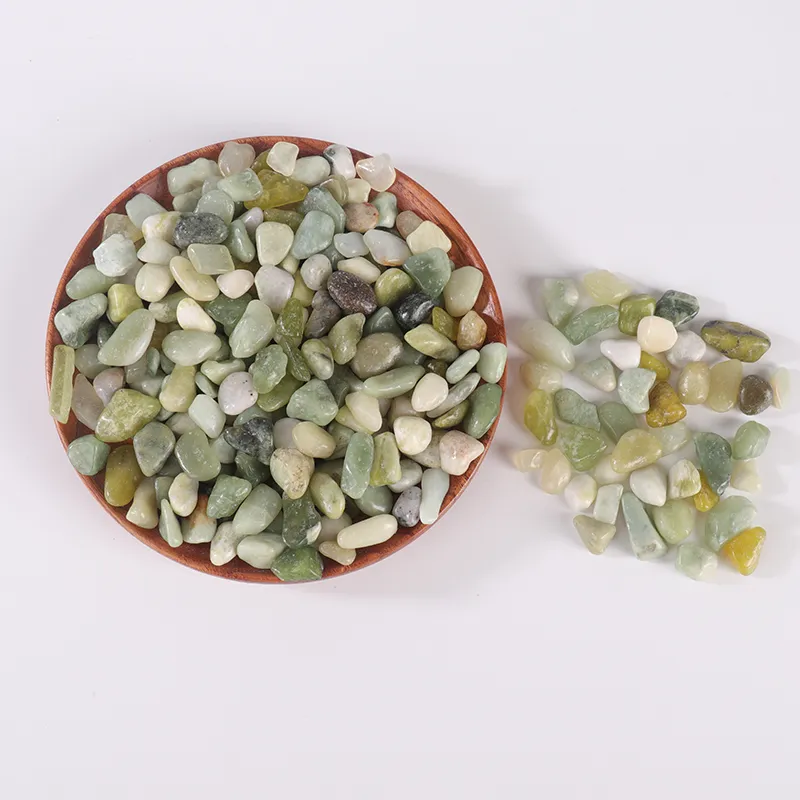7 月 . 28, 2024 13:25 Back to list
Exploring the Beauty and Versatility of Dark Natural Stone Pebbles for Landscaping
The Allure of Black Slate Pebbles in Landscaping and Interior Design
Black slate pebbles have emerged as a highly sought-after material in landscaping and interior design, captivating homeowners and designers alike with their unique aesthetic and versatile applications. These natural stones, with their rich black hue and myriad textures, offer an unparalleled elegance that can enhance the beauty of any space.
Aesthetics and Versatility
One of the most compelling aspects of black slate pebbles is their striking appearance. The deep, dark color can add depth and contrast to a variety of design schemes, making them perfect for both modern and traditional settings. The smooth, rounded surfaces of these pebbles can create a calming and sophisticated ambiance, ideal for gardens, pathways, or indoor spaces. When arranged in a garden, they can serve as eye-catching ground cover or decorative accents, providing a visually appealing contrast to the greenery of plants and flowers.
In interior design, black slate pebbles can be used creatively to achieve different aesthetic effects. For instance, they can be incorporated into countertops, pathways, or even as a decorative element in aquariums and indoor water features. Their natural texture can soften the look of hard surfaces, creating a more inviting atmosphere. Additionally, their dark color can make a bold statement, especially when paired with lighter furnishings or art pieces, offering a contemporary flair.
Practical Benefits
black slate pebbles

Beyond their beauty, black slate pebbles offer several practical benefits that make them an attractive choice for both landscaping and interior design. They are incredibly durable and resistant to weathering, making them a practical option for outdoor use. Unlike organic mulch, black slate pebbles do not decompose, which means that they will maintain their appearance without requiring regular replacement. This durability also makes them resistant to fading, ensuring that the rich black color remains vibrant throughout the years.
Moreover, black slate pebbles are relatively easy to maintain. They don’t attract pests like insects or rodents, which can be a significant advantage for outdoor landscaping. A simple rinse with water can keep them looking fresh and clean. Additionally, they allow for excellent drainage in garden beds, helping to prevent water accumulation and root rot while providing essential aeration for plants.
Sustainable Choice
In an age where sustainability is a significant consideration for homeowners and designers, black slate pebbles are an eco-friendly choice. Being a natural stone, they have minimal environmental impact compared to artificial materials. When sourced responsibly, they contribute to sustainable landscaping practices. Since they do not require heavy processing, their production has a lower carbon footprint, aligning with the principles of environmentally-conscious design.
Conclusion
In conclusion, black slate pebbles are a versatile and aesthetically pleasing choice for both landscaping and interior design. They combine beauty with practicality, offering homeowners a sustainable way to enhance their spaces. Whether used as pathways, decorative accents in gardens, or unique design elements indoors, their striking appearance and durability make them an ideal option. As trends continue to evolve toward the integration of natural materials in design, black slate pebbles are poised to remain a timeless and appealing choice, timelessly transforming spaces while embracing environmental stewardship.
-
Tumbled Nephrite Jade in Feng Shui: How to Attract Balance and Prosperity
NewsOct.18,2024
-
Nephrite Jade in Home Décor: Bringing Earthy Elegance to Your Living Space
NewsOct.18,2024
-
How to Spot Authentic Tumbled Nephrite Jade: A Buyer’s Guide
NewsOct.18,2024
-
Healing Properties of Tumbled Nephrite Jade: A Look into Ancient Wellness Practices
NewsOct.18,2024
-
Ethical Sourcing of Nephrite Jade: Ensuring Sustainable and Fair Trade Practices
NewsOct.18,2024
-
Caring for Your Tumbled Nephrite Jade: Maintenance Tips for Longevity
NewsOct.18,2024






